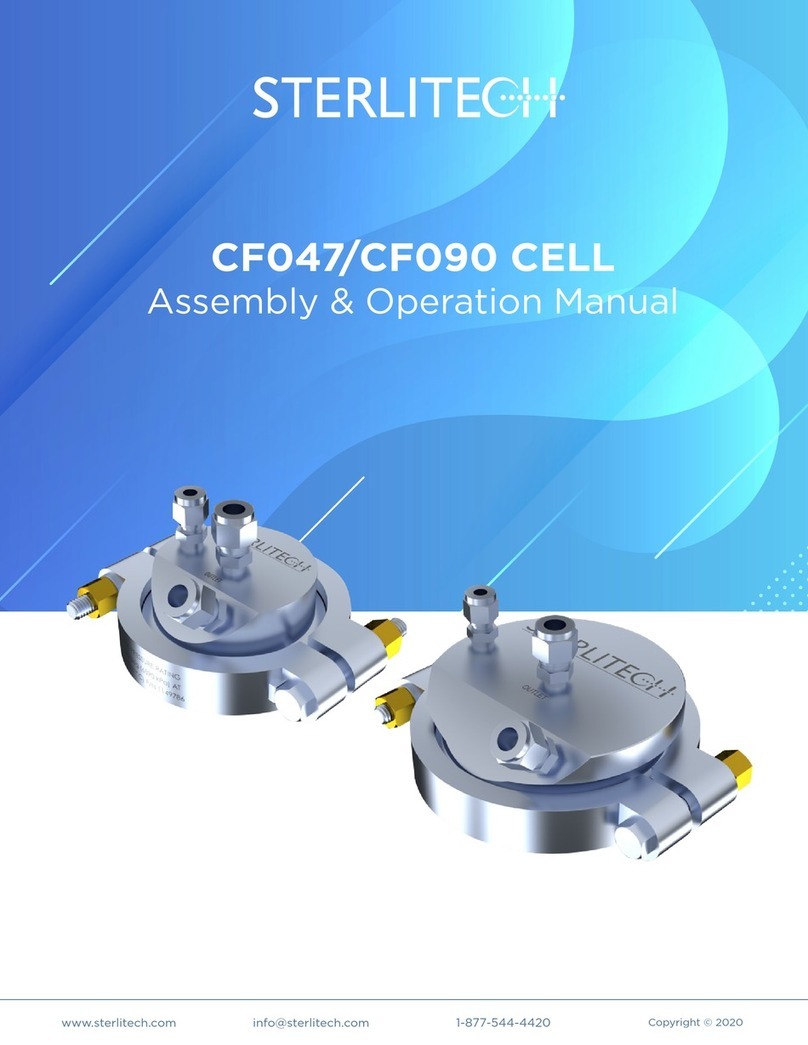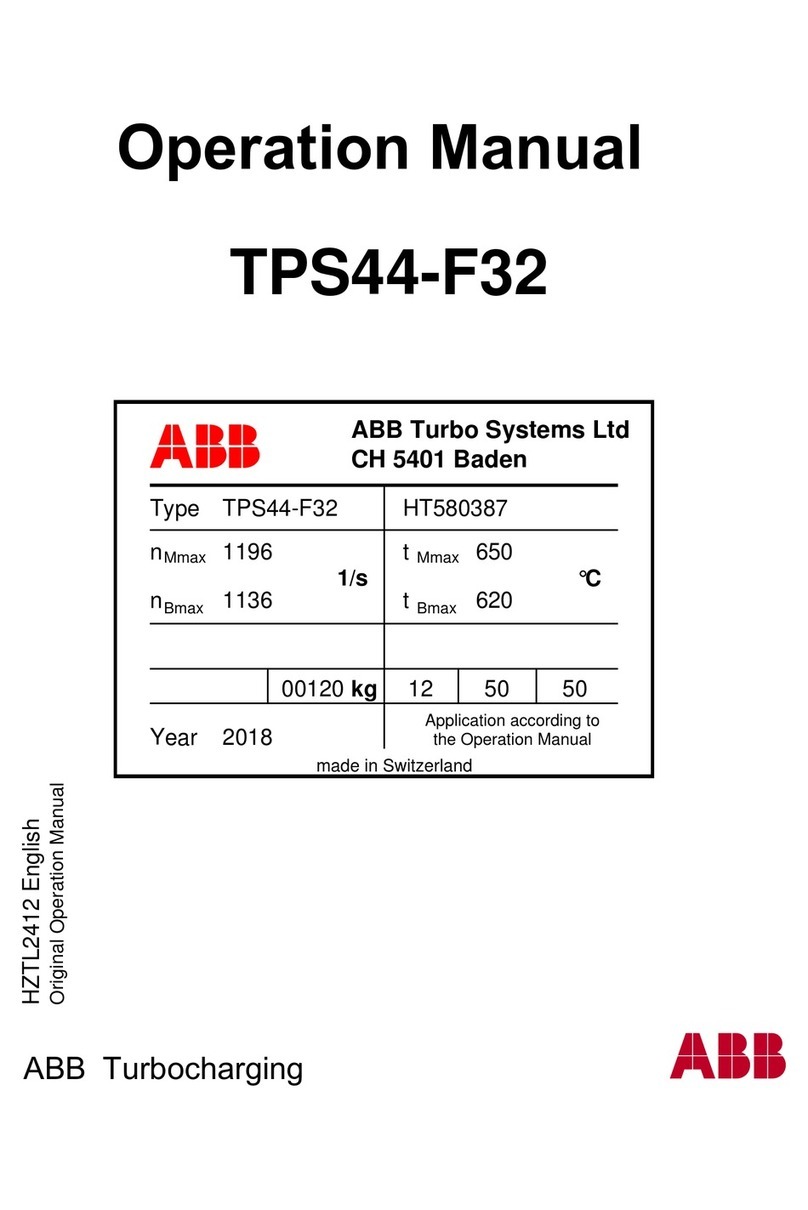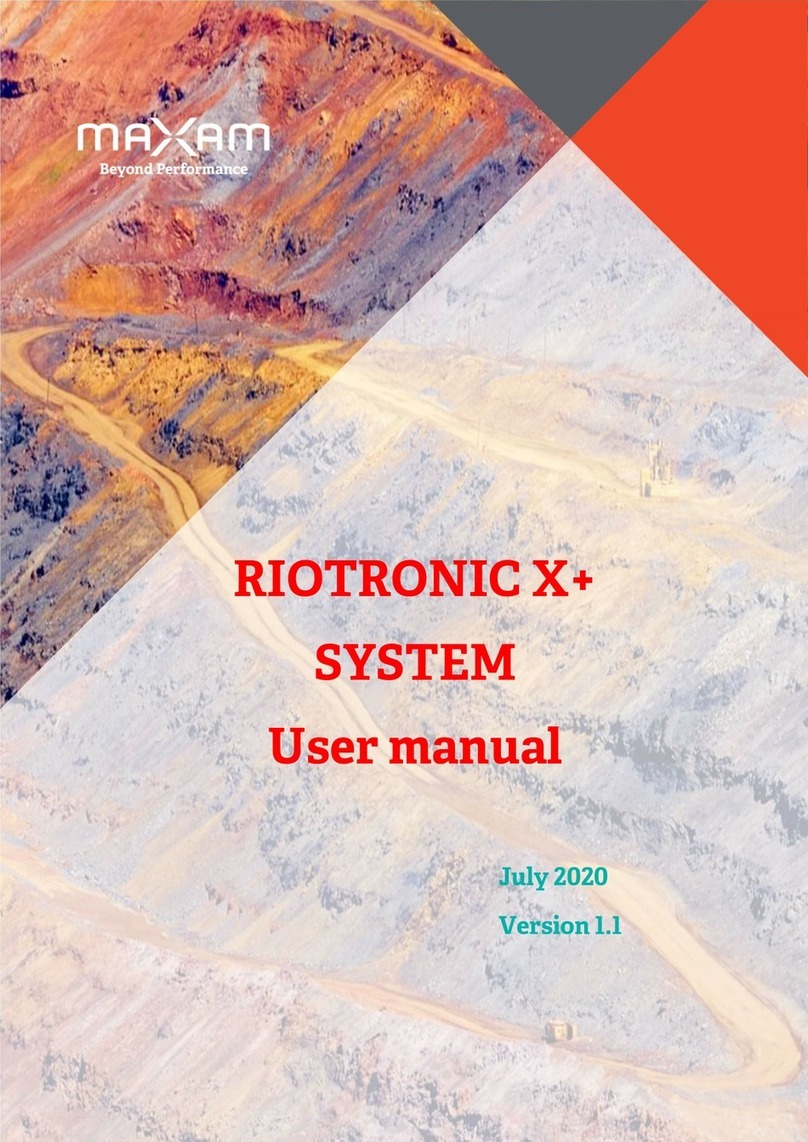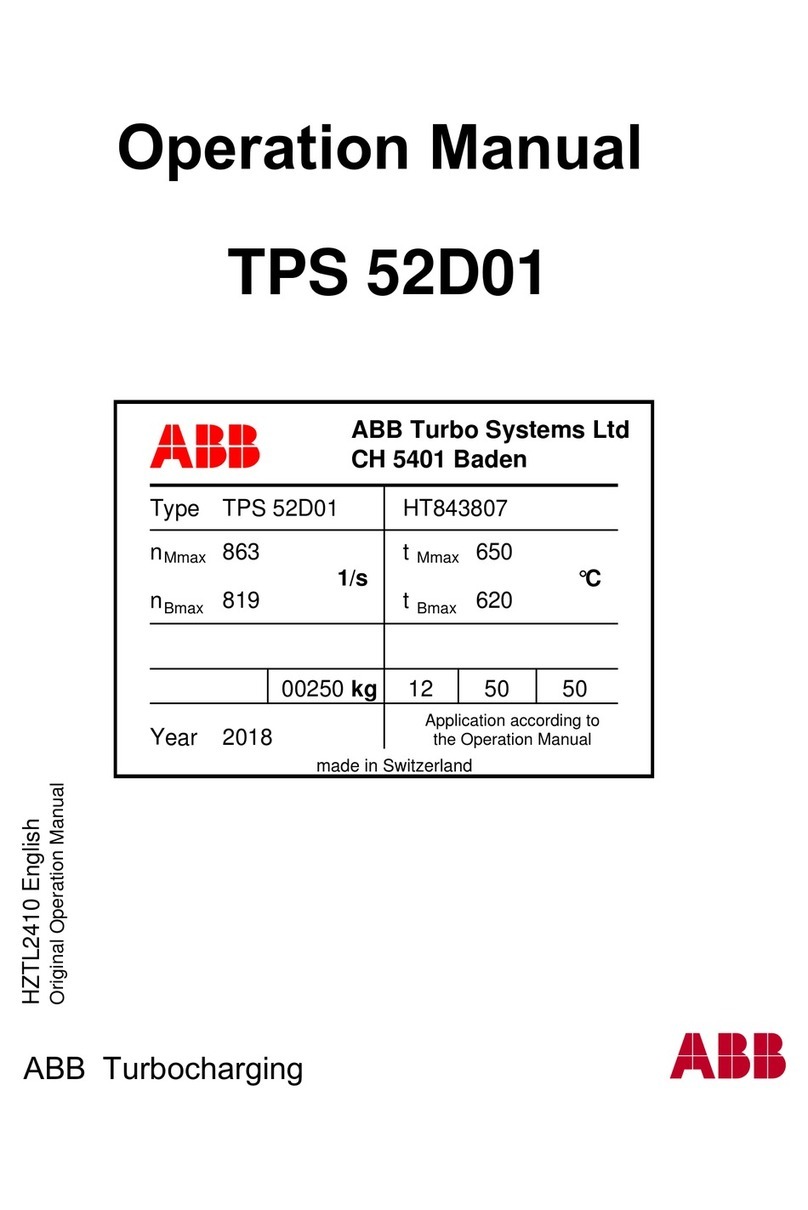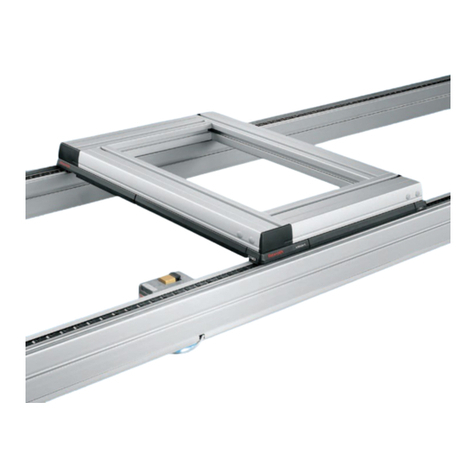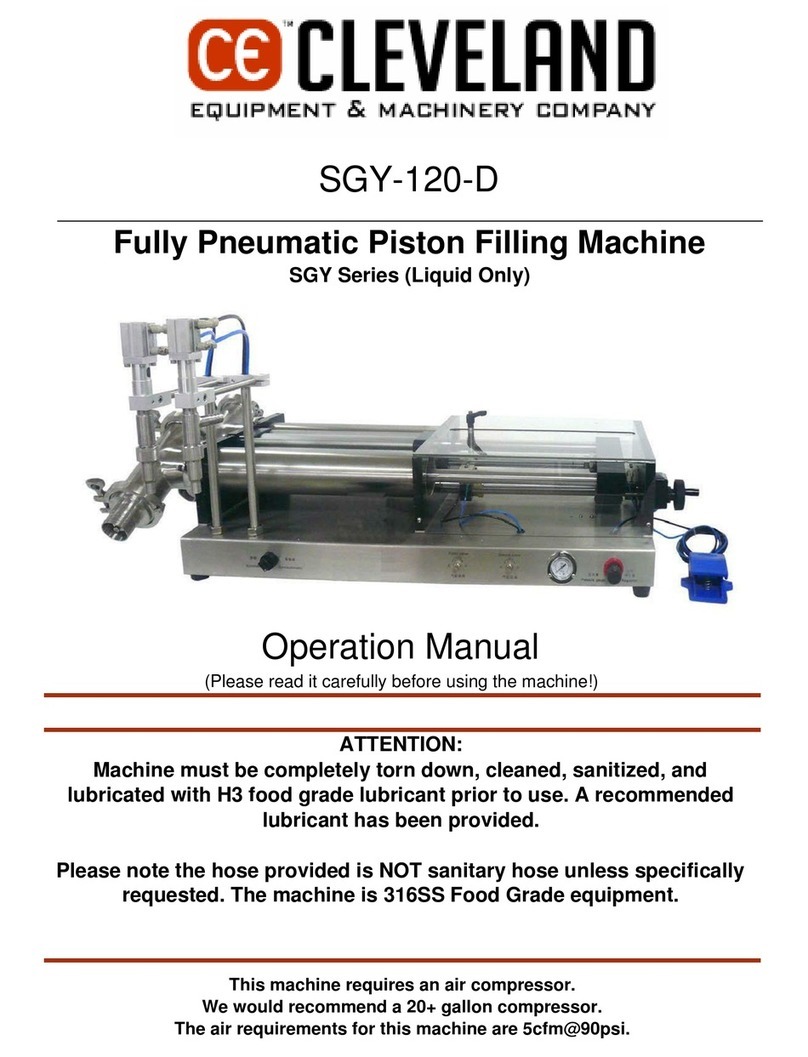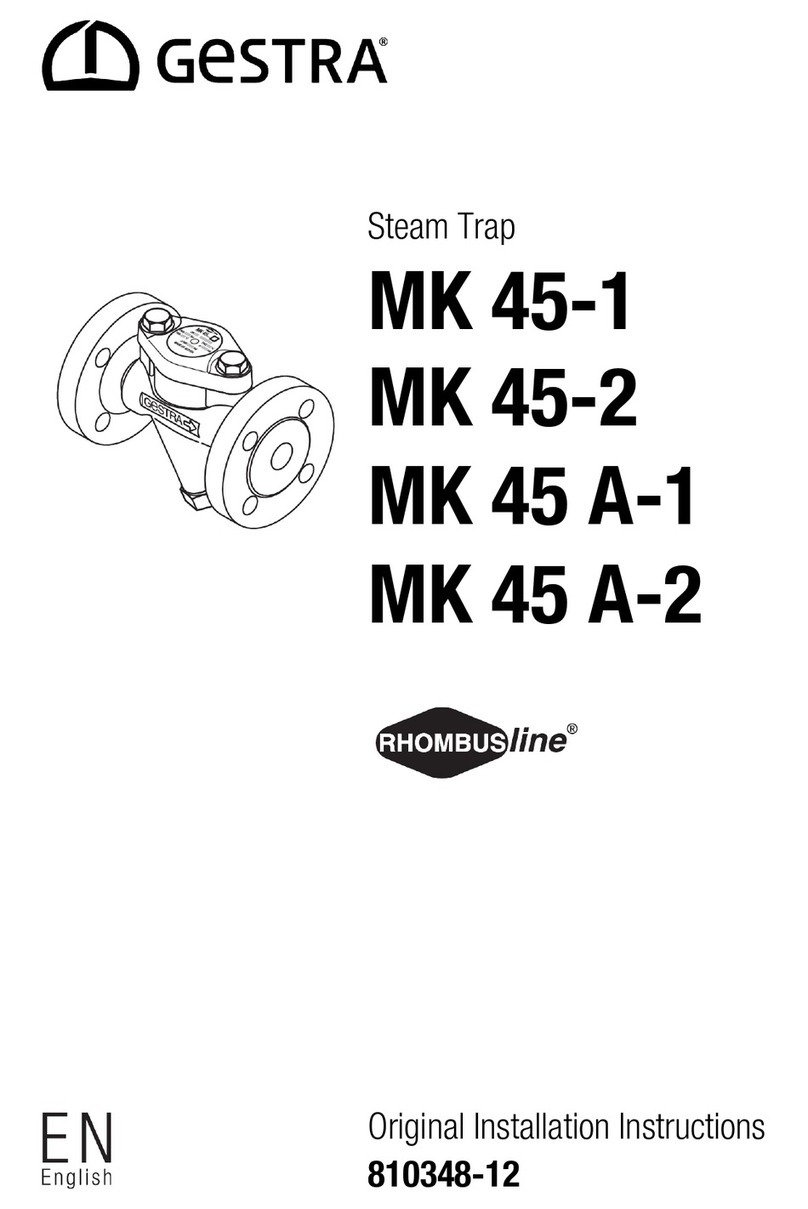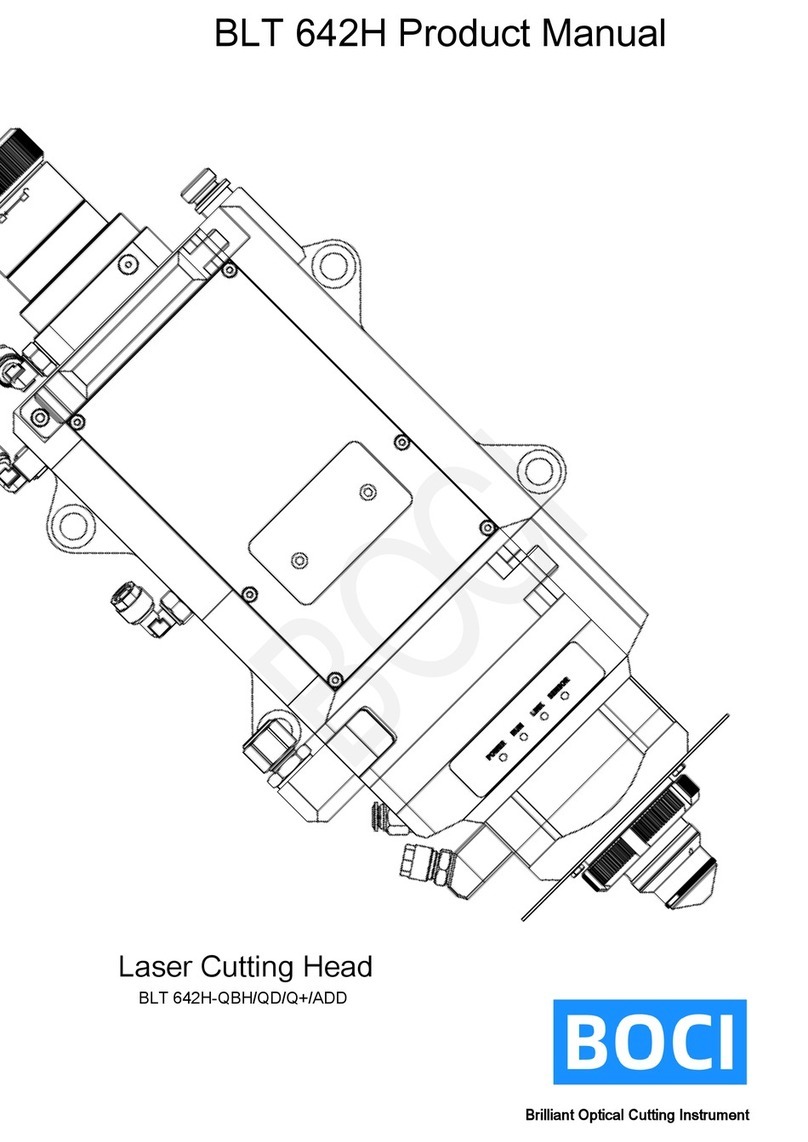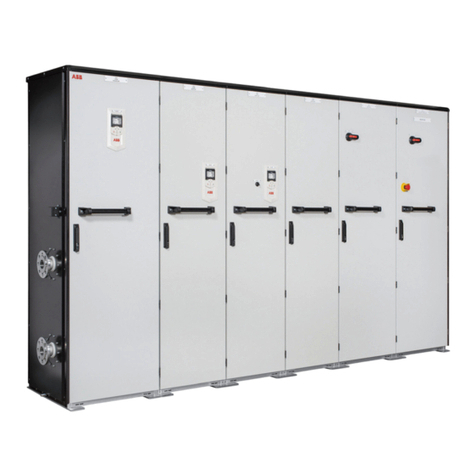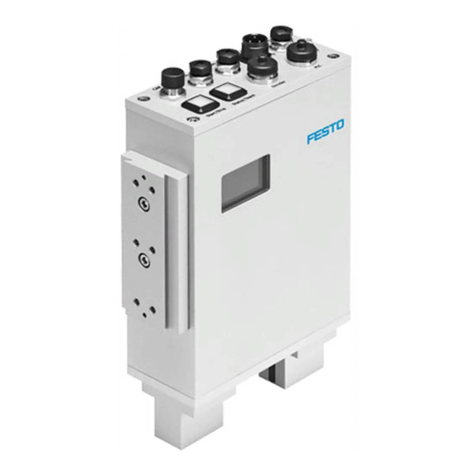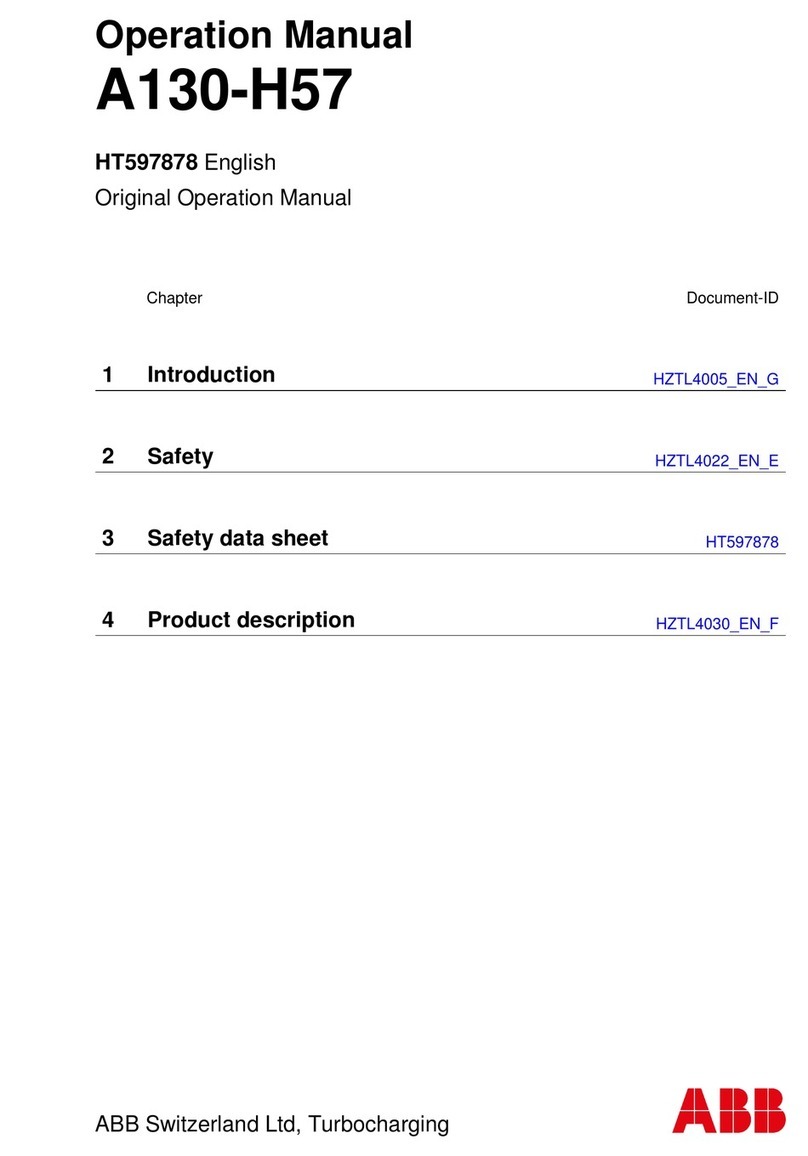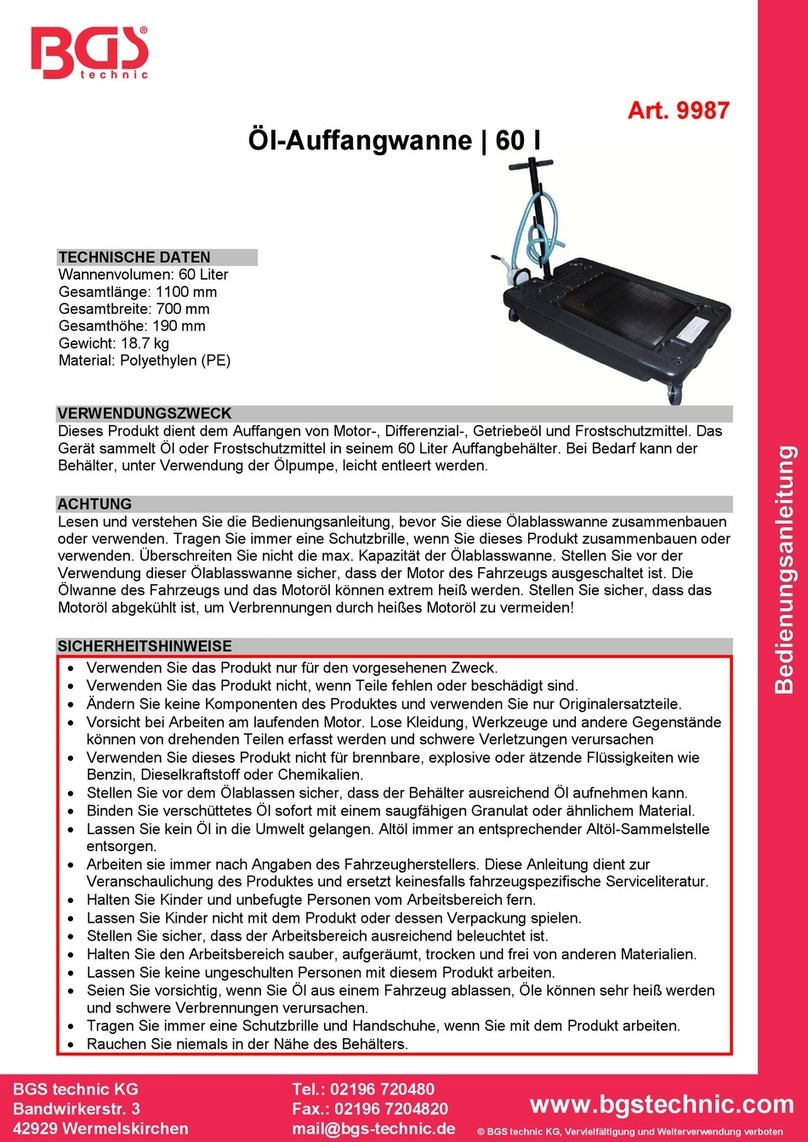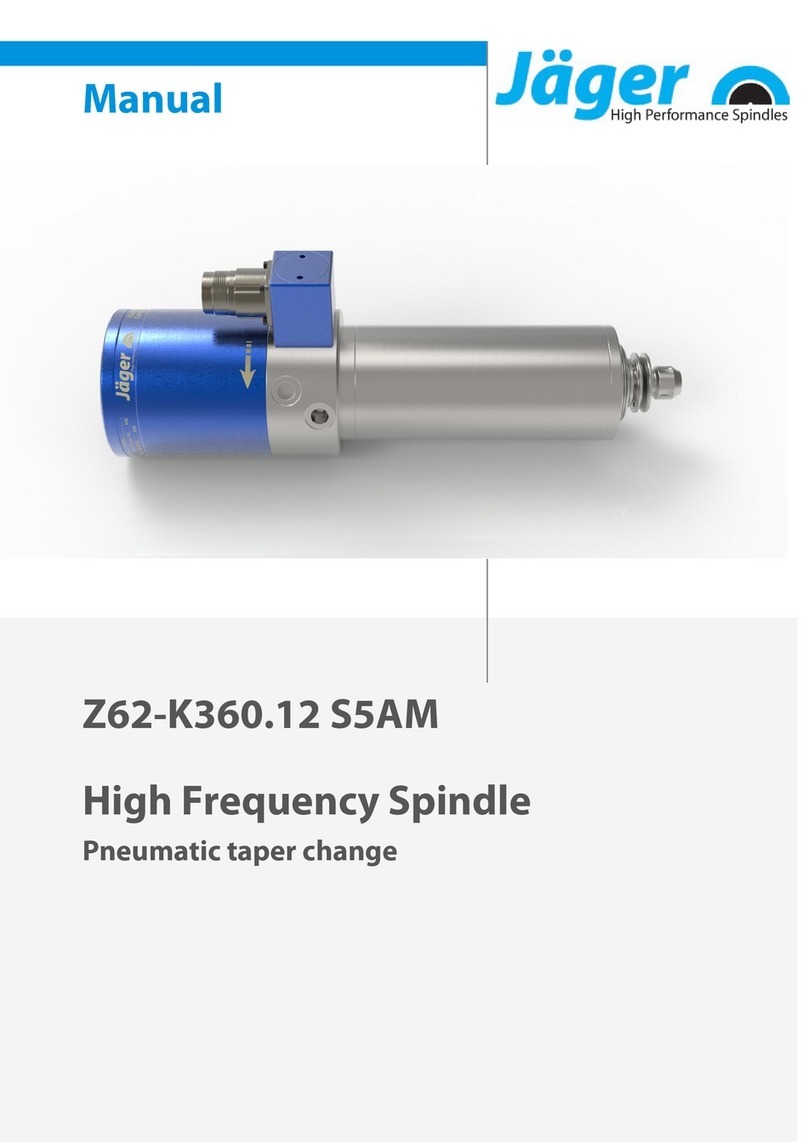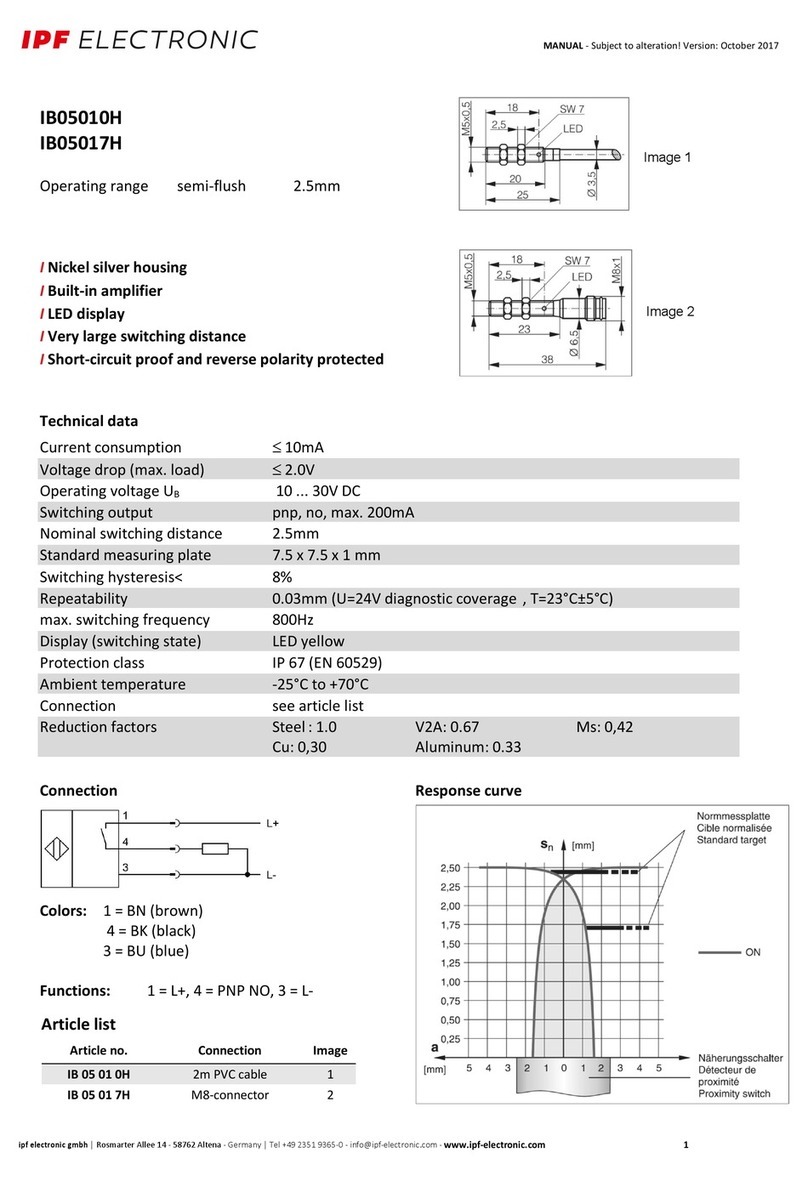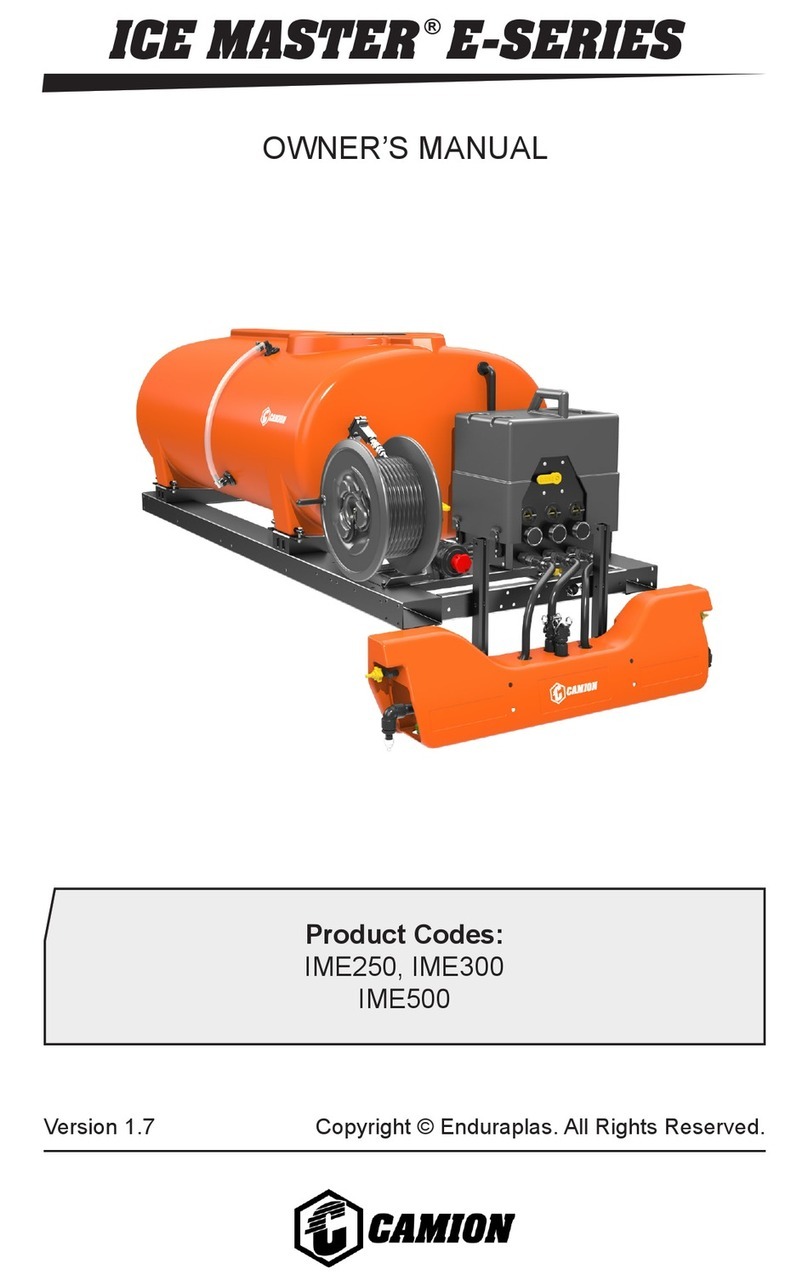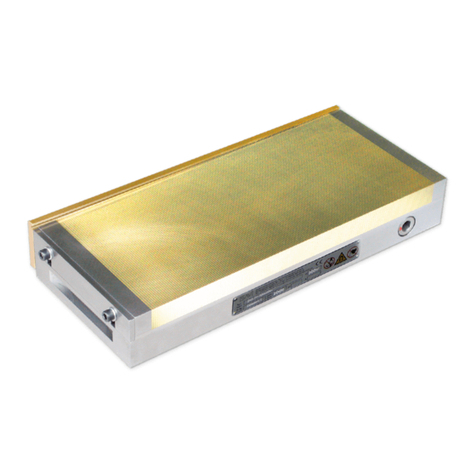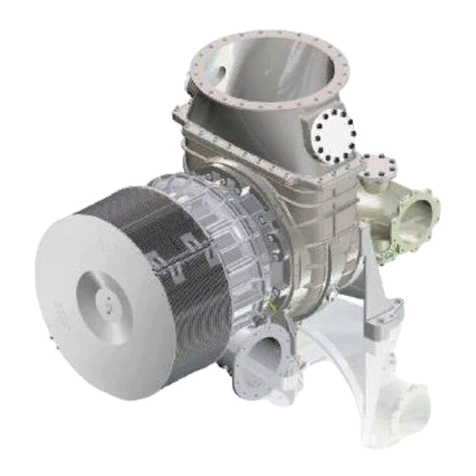Sterlitech SEPA CF CELL Supplement

Sepa CF Cell
Assembly & Operation Manual
www.sterlitech.com 1-877-544-4420info@sterlitech.com

www.sterlitech.com 1-877-544-4420info@sterlitech.com
Table of Contents
2
3
5
12
13
15
15
15
16
17
14
Page
1. Introduction
3. Sepa CF Cell Assembly
7. Return Material Authorization
2. Sepa CF Cell Components
5. Supplementary Operating Information
4. Operation of the Sepa CF Cell
6. Accessory and Spare Part Ordering Information
8. Warranty
9. Technical Assistance
Appendix 1: Sepa CF Cell Applications
Appendix 2: Bench Scale Filtration Products

2
Sepa CF Cell Manual
www.sterlitech.com 1-877-544-4420info@sterlitech.com
The Sepa CF Cell is a laboratory-scale crossflow filtration unit designed to evaluate the performance of
flat sheet membranes in a variety of applications. It simulates the flow dynamics of larger, commercially
available membrane elements such as industrial spiral wound membrane elements. By using a
combination of stainless steel (SS) shims, feed spacers, and membranes, users can vary the operating
conditions and fluid dynamics over broad ranges.
Table 1 outlines the operational parameters and technical specifications of the Sepa CF Cell.
Prior to operating or servicing this device, this manual must be read and understood.
1. Introduction
Parameter Description
Membrane Active Area
Maximum Pressure: 316SS Cell Body
Cross Flow Velocity
140 cm² (22inch²)
70 ml (2.4 ounces)
69 bars (1000 psig)
Variable
O-rings
Slot Depth
Viton* (Other materials available)
1.9 mm (0.075 inches)
95.3 mm (3.75 inches)
Hold-Up Volume
Maximum Temperature: 316SS Cell Body
Dimensions
177 °C (350 °F)
pH Range
Slot Width
Membrane Dependent
Table 1: Sepa CF Features and Technical Specifications

Sepa CF Cell Manual
www.sterlitech.com 1-877-544-4420info@sterlitech.com
3
Verify that the Sepa CF Cell was shipped complete, intact, and undamaged.
The complete Sepa CF Cell includes:
2. Sepa CF Cell Components
1. Stainless steel cell body: top and bottom
2. Anodized aluminum cell holder with piston and high-pressure gauge
Cell Top
Cell Holder
Cell Bottom

4
Sepa CF Cell Manual
www.sterlitech.com 1-877-544-4420info@sterlitech.com
3. Tubing and hardware kit, which includes:
4. Concentrate control valve with high pressure gauge
5. O-rings (2)
a. Feed Spacers
c. ¼-inch diameter permeate tubing (91.4 cm [3 ft])
b. 1 pack of 5 permeate carriers
The Sepa CF Cell also requires additional equipment to be operated, which are sold
separately:
• Hydraulic hand pump to pressurize the cell holder
• Feed pump
• Feed tank
• Filtration membrane packs
• Assortments of shims and additional spacers
2.1 Additional Equipment

Sepa CF Cell Manual
www.sterlitech.com 1-877-544-4420info@sterlitech.com
5
After verifying that all the necessary components were shipped and present, you can begin
the assembly of the Sepa CF Cell.
The cell body consists of the cell top, membrane filter, feed spacer/ permeate carriers
(optional), shims (optional), O-rings, and cell bottom. Figure 1 illustrates a typical assembly of
the cell body.
3. Sepa CF Cell Assembly
3.1 Cell Body Assembly
Figure 1: Typical Sepa CF Cell Body Assembly

6
Sepa CF Cell Manual
www.sterlitech.com 1-877-544-4420info@sterlitech.com
To assemble the Sepa CF Cell Body:
1. Connect the concentrate flow control valve to the cell bottom by wrapping PTFE tape
around the valve’s male NPT end and screwing it into the concentrate outletport.
Note: The cell bottom is the half of the cell body that has the four alignment pins. The cell
top has the holes to accept the alignment pins.
2. Install the O-rings into the grooves on the cell bottom and wet them with a small amount
of water or the fluid to be processed.
Caution: Make sure the O-rings lie flat in the grooves of the cell bottom. Leaking may occur
if the O-rings do not lie flat in the grooves. If the O-rings are not correctly installed, they
will be cut or crushed when the system is operating.
3. Place a shim, if needed, in the cavity inside of the inner O-ring.

Sepa CF Cell Manual
www.sterlitech.com 1-877-544-4420info@sterlitech.com
7
4. Install the feed spacer into the central cavity, on top of the shim. The feed spacer must lie
flat and be fully contained within thecavity.
Note: The feed spacer and the permeate carrier look similar and are cut in the same size. The
permeate carrier is thinner and has a tight weave while the feed spacer has large gridding.
5. Place a piece of pre-cut membrane over the feed spacer using the four guideposts to hold
the membrane in position. The membrane should be installed with the shiny (or active) side
down toward the feed spacer.
Note: If you are cutting your own membranes, the membrane’s outer edge should fit between
the inner and outer O-rings in the cell body to prevent leakage.

8
Sepa CF Cell Manual
www.sterlitech.com 1-877-544-4420info@sterlitech.com
6. Wet the permeate carrier with water or the fluid to be processed and place it into the
cavity in the cell top. The surface tension caused by wetting the carrier will keep it in place.
7. Complete the assembly of the cell body by placing the cell top onto the cell bottom. The
alignment holes should fit snugly over the alignment pins in the cell bottom.

Sepa CF Cell Manual
www.sterlitech.com 1-877-544-4420info@sterlitech.com
9
8.Once the cell body is assembled and the quick release connector is installed into the cell
holder (See Cell Holder Assembly below), insert the cell body into the cell holder until it rests
against the two stops in the cell holder.
Caution: The cell body is relatively heavy at 14.5 kg (32 lbs.).
The cell holder is filled with Mobil DTE 20 Series Hydraulic Oil to operate the hydraulic piston.
Before using the Sepa CF Cell for the first time, the brass quick release connector must be
installed into the cell holder.
To install the quick release connector into the cell holder:
1. Wrap PTFE tape clockwise around the threads of the brass fitting while the open end is
facing you.
2. Move the cell holder into a vertical position with the shipping plug and/or pressure
gauge facing upward.*
3. Carefully remove the shipping plug in the hydraulic port of the cell holder.
4. Place the brass quick release connector into the hydraulic port.
5. Tighten the brass fitting with an open-ended wrench (1” wrench issuggested).
* Caution: Attempting to install the brass quick release connector with the cell in the wrong
position will cause the hydraulic fluid to spill.
3.2 Cell Holder Assembly

10
Sepa CF Cell Manual
www.sterlitech.com 1-877-544-4420info@sterlitech.com
Figure 2: Example Sepa CF Flow Diagram
3.3 Sepa CF Cell Connections and Parts
Sepa CF Flow Diagram
Item No.
4
8
Part Description
Drain Valve
By-Pass Needle Valve with 3/8” “T“ Tube Fitting
2
6
10
B
Pressure Relief Valve
Scale for Measuring Permeate Flux
Concentrate Control Valve Assembly (0-1000 psi)
3/8” Low Pressure Tubing, By-Pass
1
5
9
Conical Feed Tank
Flow Meter
Sepa CF Cell Assembly
3
7
11
C
A
D
E
Motor & Pump Assembly
Permeate Collector
Feed Pressure Gauge
3/8” Low Pressure Tubing, Return Line
3/8” High Pressure Flex or Rigid Tubing, Feed Line
1/4” Low Pressure Tubing, Permeate Output Line
3/8” Low Pressure Tubing

Sepa CF Cell Manual
www.sterlitech.com 1-877-544-4420info@sterlitech.com
11
Figure 2 shows the typical plumbing connections that need to be made for the operation
of the Sepa CF Cell. The configuration can change slightly depending on the objectives of
the user. In general, the connections to be made are:
1. Hydraulic pressure source to the cell holder
2. Feed vessel to the inlet pump
3. Pump outlet to the feed inlet of the cell body
4. Concentrate flow control valve to the feed vessel
4. Permeate outlet to the permeate collection vessel
Figure 2 also lists the additional components that are necessary to operate the SepaCF
cell. These components are sold Separately and can be found in the Membrane/Process
Development section of the Sterlitech website (http://www.sterlitech.com/ membrane-
process-development.html).The final assembly of the crossflow system will vary with the
feed vessels, pumps, and tubing used.
To connect the hydraulic pressure source to the cell holder:
1. Push the quick release fitting of the hose of the hydraulic pressure source (hydraulic
pump) against the quick release fitting installed into the cell holder. The outer collar of
the female fitting will extend about 3.2 mm(1/8 inch).
2. Rotate the collar on the female fitting ¼ turn so the notch and the groove do not
line up.
3. Pressurize the cell holder using the handle on the hydraulic pump up to 1000 psi.
To disconnect the hydraulic pressure source to the cell holder:
1. Release all hydraulic pressure in the system (by opening the release valve on the hand
pump).
* Caution: Do not disconnect the hydraulic pressure source from the cell holder while
the system is pressurized.
2. Turn the collar on the female fitting until the notch and the groove line and push
the collar to Separate the fittings. Connect a length of 1/4 inch nylon tubing to the
permeate outlet using the polypropylene fittingprovided.
3. Insert the free end of the tubing into the permeate collection vessel. Ensure that all
connections are snug.
4. Connect the 3/8 inch nylon tubing from the outlet of the feed pump to the inlet of
the feed tank.

12
Sepa CF Cell Manual
www.sterlitech.com 1-877-544-4420info@sterlitech.com
Once the SepaCF Cell is assembled and connected to a feed system, it can be used in a
variety of applications that includes reverse osmosis, ultrafiltration, nanofiltration, and
microfiltration.
To operate the Sepa CF Cell:
1. Set the feed pressure less than or equal to the piston pressure on the cell holder/cell
body and turn the feed flow pumpon.
Note: A good starting point may be to set the system at 1.7 bar (25 psig) pressure
for ultrafiltration, 17.2 bar (250 psig) for reverse osmosis, and 2–3 Lpm(0.5–0.8gpm)
concentrate flow. If this does not produce the desired results, then the parameters can
easily be adjusted, and dierent membranes can be used.
2. Verify the feed pressure by comparing the reading on the piston cell holder pressure
gauge to the reading on the concentrate pressuregauge.
3. Adjust the concentrate flow control valve to obtain the desired pressure and flow.
Experimentation enables you to determine the optimum settings for pressure, flow
rate, and shim/spacer combination to use on the chosen membrane and the fluid being
processed.
4. Operation of the CF Cell
1. Turn the pumpsOFF.
2. Turn the pressure relief valve knob on the hydraulic pump counterclockwise to release
the hydraulic pressure in the system.
3. Slide the cell out of the cell holder.
4. Separate the cell body top from the cell bottom.
5. Remove themembrane.
6. Install the new membrane (and, if necessary, spacers/permeatecarrier).
7. Reassemble the cell top andbottom.
8. Insert the cell in the cell holder.
9. Pressurize the cell holder to 1000 psi using the handpump.
10. Turn the flow pumpson.
To replace a membrane filter:

Sepa CF Cell Manual
www.sterlitech.com 1-877-544-4420info@sterlitech.com
13
5.3. Temperature Limits
5.4. Membrane Cleaning
The membranes, feed spacer, permeate,
O-rings, and cell body materials construction
dictates maximum operating temperatures.
The 1812 housing can be cleaned easily after the membrane is removed. However, you may
wish to simulate the actual cleaning conditions of Cleaning-In-Place (CIP) in larger systems
with spiral-wound or tubular membranes. CIP chemically cleans without removing the
membrane to mechanically scrub the unit.
During CIP, cleaning solutions are re-circulated and, in some cases, allowed to sit for a period
of time within the cell body. In some cases, the feed pump can be used to re- circulate the
cleaning solutions.
Components Maximum Temperature
1812 Housing 177 °C (350 °F)
Variable
Viton 200 °C (400 °F)
150 °C (300 °F)
Membrane Elements
O-Rings
EPDM
Table 2: Upper Temperature Limits
5.1. Membrane Performance Results
Spiral wound membranes containing mesh spacers are usually operated with a fluid velocity
across the membrane surface of 0.1–0.5 m/sec (0.3–1.6 ft/sec). Higher velocities in membranes
may lead to an excessive pressure dierential across the membrane and possible damage.
Hollow fiber membranes, tubular membranes, and membranes withtubular spacers may be
operated at higher velocities, but this may not contribute to a more eective operation.
5.1. Membrane Performance Results
Other parameters such as viscosity, pressure, and suspended solids may also aect
performance/operation. Experimentation with the SepaCF Cell can help predict the best
operating parameters. If your pump is delivering too much flow, a portion of the flow can
be diverted back to the feed container before entering the feed inlet of the cell body. This
requires installation of an optional bypass valve and fitting on the pump outlet (Figure 2, #4),
which is not supplied with the system.
5. Supplementary Operating Information
Autoclaving the 316SS cell body is
acceptable, recognizing the temperature
limitation of 82°C (180°F) on the membrane,
feed spacer, and permeate carrier. The cell
holder should never be autoclaved because it
does not come into contact with the process
fluid.

14
Sepa CF Cell Manual
www.sterlitech.com 1-877-544-4420info@sterlitech.com
6. Accessory and Spare Part Ordering Information
Accessories and spare parts for the 1812 housing can be ordered by calling Sterlitech Corporation at
1-877-544-4420 or by visiting www.sterlitech.com.
Table 3: Accessory and Spare Part Ordering Information
Product
Square Parts
Shipping Weight Ordering Number
Sepa CF Cell, for operation to 69 bars (1000 psig)
Membrane Packs
Sepa Cell Body
39 kg (86 lbs.)
5 kg (11 lbs.) 1230086
Contact Sterlitech
1230029
1230064
1143205
1149418
1230060
Contact Sterlitech
14.5 kg (32 lbs.)
Aluminum Cell Holder 21 kg (46 lbs.)
Hydraulic Hand Pump Kit
Viton O-rings 28 g (1 oz)
Concentrate Control Valve 0.9 kg (2 lbs.)
Accessories
Permeate Carrier Pack (PP)
47 mil Parallel Feed Spacer (PP, 5/pack)
65 mil Feed Spacer (PP, 5/pack)
1142817
1142818
1142814
1142819
1142816
1143763
0.5 kg (1 lb.)
0.5 kg (1 lb.)
0.5 kg (1 lb.)
31 mil Feed Spacer (PP, 5/pack) 0.5 kg (1 lb.)
17 mil Feed Spacer (PP, 5/pack) 0.5 kg (1 lb.)
47 mil Feed Spacer (PP, 5/pack) 0.5 kg (1 lb.)
Contact Sterlitech Contact SterlitechFeed Flow Pump
Feed Spacer Assortment Pack (PP): 17, 31, 47,
and 65 mil1
Shims (12 total/pack):
• 4 of 2 mil
• 4 of 5 mil
• 2 of 10 mil
• 1 of 15 mil
• 1 of 25 mil
1232558
1231104
0.5 kg (1 lb.)
0.5 kg (1 lb.)

Sepa CF Cell Manual
www.sterlitech.com 1-877-544-4420info@sterlitech.com
15
7. Return Material Authorization
8. Warranty
9. Technical Assistance
If materials are to be returned to Sterlitech for repair, evaluation, or warranty consideration, a Return
Material Authorization (RMA) number and form must be obtained from Sterlitech prior to the return.
Contact Sterlitech’s Customer Service Department for these forms.
The form must be completed and returned with the material. Be sure to include a complete, detailed
written reason for the return. Also, include serial numbers, installation and removal dates, and any other
pertinent information that is available. 1812 Housings have a serial number imprinted on the cell bottom.
Indicate the proposed disposition of the material, and reference the RMA number on all packages or
cartons. All material must be shipped to Sterlitech with freight prepared by the customer.
The following is made in lieu of all other warranties expressed or implied. Sterlitech Corporation
guarantees equipment to be free from defects in material and workmanship when operated in
accordance with written instructions for a period of one year from receipt. Parts not manufactured by
Sterlitech are covered by their manufacturer’s warranties, which are normally for one year.
Manufacturers and Seller’s only obligation shall be to issue credit against the purchase or replacement of
equipment proved to be defective in material or workmanship. Neither manufacturer nor seller shall be
liable for any injury, loss or damage, direct or indirect, special or consequential, arising out of the use of,
misuse, or the inability to use such product.
The information contained herein is based on technical data and tests, which we believe to be reliable,
and is intended for use by persons having technical skill at their discretion and risk. Since conditions
of use are outside Sterlitech’s control, we can assume noliability whatsoever for results obtained or
damages incurred through the application of the data presented.
This information is not intended as a license to operate under, or a recommendation to infringe upon,
any patent of Sterlitech or others covering any material or use.
The foregoing may not be altered except by a written agreement signed by ocers of the manufacturer.
Please contact us if you have any questions or technical inquiries about our products by calling
Sterlitech Corporation at 1-877-544-4420 or by visiting www.sterlitech.com.

16
Sepa CF Cell Manual
www.sterlitech.com 1-877-544-4420info@sterlitech.com
Appendix 1: Sepa CF Cell Applications
The following studies utilized the SepaCF Cell in their method and are listed here to
illustrate the potential applications for the SepaCF. These studies are good references for
understanding the operation of the SepaCF Cell.
Application Study Citation
Reverse Osmosis (Desalination) Sachit, D. and Veenstra, J. (2014). Analysis
of reverse osmosis membrane performance
during desalination of simulated brackish
surface waters. Journal of Membrane Science,
453, pp.136-154.
Yangali-Quintanilla, V., Li, Z., Valladares, R., Li,
Q. and Amy, G. (2011). Indirect desalination
of Red Sea water with forward osmosis and
low pressure reverse osmosis for water reuse.
Desalination, 280(1-3), pp.160-166.
Forward Osmosis and Low-Pressure Reverse
Osmosis
POST, A., SAMPELS, H., HOLDER, A. and
HINRICHS, J. (2012). A comparison of micellar
casein and β-casein as sources of basic
peptides through tryptic hydrolysis and their
enrichment using two-stage ultrafiltration.
International Journal of Dairy Technology,
65(4), pp.482-489.
Ultrafiltration (Food Processing)
Ranamukhaarachchi, S., Meissner, L. and
Moresoli, C. (2013). Production of antioxidant
soy protein hydrolysates by sequential
ultrafiltration and nanofiltration. Journal of
Membrane Science, 429, pp.81-87.
Ultrafiltration and Nanofiltration (Protein
Production)
Contact SterlitechMembrane Development

Sepa CF Cell Manual
www.sterlitech.com 1-877-544-4420info@sterlitech.com
17
Appendix 2: Sterlitech Bench Scale Filtration Products
Filter Holder
Membrane
Active Area
Typical
Permeate Flux
Typical
Permeate Flow
Rate (per Cell)
System
Capacity
Max. Pump
Capacity
Min. Batch
Volume (per
Cell)
Filtration
Mode(s)
Cell Material
Max Operating
Pressure
HP4750(X)
14.6 cm2(2.26in2)
30-300 LMH
(17.6-176 GFD)
1.5-15 mL/min
0.7-7L/day
(0.2-2 GPD)
N/A
300mL
Dead-End Stirred
Cell
SS316,HastelloyTM
HP4750: 69bar
(1,000 psi)
HP4750X: 172bar
(2,500 psi)
20.6 cm2(3.2in2)
30-300 LMH
(17.6-176 GFD)
1-10mL/min
1.5-15L/day
(0.4-4 GPD)
6.8 LPM (76 bar)
1.8 GPM (1,100 psi)
3.7 L(1gal)
Cross Flow, Forward
Osmosis
PTFE, Delrin,Acrylic,
SS316, HastelloyTM
PTFE, Delrin,Acrylic,
SS316, HastelloyTM
PTFE/Acrylic: 27.6
bar (400psi)
Delrin/SS316/
HastelloyTM:
69 bar (1,000 psi)
PTFE/Acrylic: 27.6
bar (400psi)
Delrin/SS316/
HastelloyTM:
69 bar (1,000 psi)
Acrylic: 15.2bar
(220 psi)
SS316/HastelloyTM:
69bar (1,000 psi)
Acrylic, SS316,
HastelloyTM
SS316
Standard:41.4 bar
(600 psi)
High pressure:60 bar
(870 psi)
42 cm2(6.5in2)
30-300 LMH
(17.6-176 GFD)
2-20 mL/min
3-30L/day
(0.5-5GPD)
6.8 LPM (76 bar)
1.8 GPM (1,100 psi)
3.7L(1gal)
Cross Flow, Forward
Osmosis
140 cm2(22in2)
30-300 LMH
(17.6-176 GFD)
7-70mL/min
10-100L/day
(0.5-5GPD)
6.8 LPM (76 bar)
1.8 GPM (1,100 psi)
3.7L(1gal)
Cross Flow, Forward
Osmosis
0.27-0.46 m
(3-5ft2)
30-300 LMH
(17.6-176 GFD)
350-2,300mL/min
194-1,940 L/gal
(51-510 GPD)
6.8-38 LPM (76bar)
1.8-10GPM(1,100psi)
15L(4gal)
Cross Flow
Discoverer
CF016
Innovator
CF042
Explorer
Sepa
Developer
1812
Investigator

18
Sepa CF Cell Manual
www.sterlitech.com 1-877-544-4420info@sterlitech.com
Notes:

Sepa CF Cell Manual
www.sterlitech.com 1-877-544-4420info@sterlitech.com
19
Notes:
Other manuals for SEPA CF CELL
1
Table of contents
Other Sterlitech Industrial Equipment manuals
